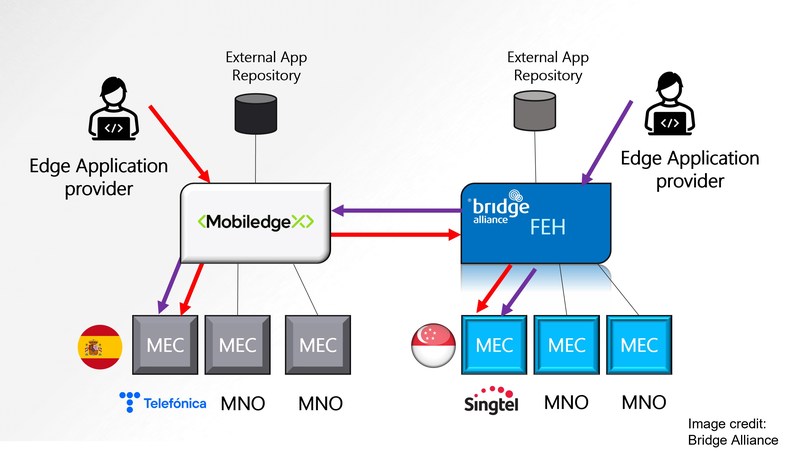Edge-Cloud GSMA standards federation is “another big step closer to edge monetization”
It’s been said that the future is already here, but it’s unevenly distributed. Mobile edge computing architecture, orchestration, and operation is no different. The burgeoning edge of the cloud isn’t just one edge, and it isn’t connecting to just one cloud.
How do we make sure that services which rely on the edge work seamlessly between Communication Service Providers (CSPs)? Edge interoperability is a growing concern of software developers making edge apps, says Deutsche Telekom-backed MobiledgeX. What they want is a reliable “write once, deploy everywhere” edge computing model.
MobiledgeX is promoting its updated telco edge plaform, Edge-Cloud as an important step towards that end. The new Edge-Cloud 3.1 introduces “federation between any [GSMA] standards-based mobile edge computing platform.”
The new version adds an “east-west” interface to handle automated migration of application backend workloads between operators’ edge clouds. The update ensures consistent quality of experience (QoE) between different edge networks, said the company.

Michael Lochead, senior vice president of product for MobiledgeX, said in a statement this news brings “the industry another big step closer to edge monetization.”
The new release adds a new Application Programming Interface (API). Now edge application developers can define a 5G Quality of Service (QoS) policy.
“MobiledgeX then interacts with the 5G network to configure the defined policy, simplifying the application onboarding process for MNOs that would otherwise have to configure QoS policies manually on behalf of developer partners,” explained the company.
Also new in this release are enhancements which provide better operational control for “bare metal” Kubernetes deployments including Google Anthos.
“Multi-tenancy is now supported, making it possible for different developer organizations to share the same bare metal cluster,” said MobiledgeX.
Trialing a heterogenous edge with Singtel, Telefonica and Bridge Alliance
Putting its money where its mouth is, MobiledgeX and partners also announced this week the results of a heterogeneous edge connectivity trial. The collaboration is the result of the GSMA Foundry Telco Edge Cloud (TEC) project.
The company worked with Singtel, Bridge Alliance, and Telefonica to connect two geographically disparate MECs. Singtel’s MEC deployment uses the Bridge Alliance Federated Edge Hub (FEH), while Telefonica’s use MobiledgeX Edge-Cloud.
“The hub-to-hub interconnection between the Bridge Alliance Federated Edge Hub (FEH) and MobiledgeX Edge-Cloud platform could allow edge applications to be deployed across different edge platforms and regions served by each hub,” said the companies in a statement.
Singtel’s customers will be able to deploy edge apps on Telefonica’s MEC and vice versa, according to the companies. They hope this will enable multi-market services deliveries across geographical regions. This MEC interconnectivity can lead to better edge services scalability, they said.
“Previously, interconnections were performed between operators on a one-on-one basis, making it difficult to scale the edge coverage,” they explained.
Juan Carlos Garcia, senior vice president of Technology and Ecosystem for Telefonica, sees edge cloud federation as essential “for the success of the Telco Edge Cloud.”

